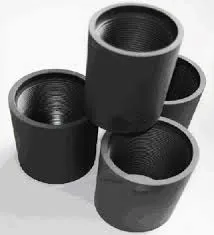- Afrikaans
- Albanian
- Amharic
- Arabic
- Armenian
- Azerbaijani
- Basque
- Belarusian
- Bengali
- Bosnian
- Bulgarian
- Catalan
- Cebuano
- Corsican
- Croatian
- Czech
- Danish
- Dutch
- English
- Esperanto
- Estonian
- Finnish
- French
- Frisian
- Galician
- Georgian
- German
- Greek
- Gujarati
- Haitian Creole
- hausa
- hawaiian
- Hebrew
- Hindi
- Miao
- Hungarian
- Icelandic
- igbo
- Indonesian
- irish
- Italian
- Japanese
- Javanese
- Kannada
- kazakh
- Khmer
- Rwandese
- Korean
- Kurdish
- Kyrgyz
- Lao
- Latin
- Latvian
- Lithuanian
- Luxembourgish
- Macedonian
- Malgashi
- Malay
- Malayalam
- Maltese
- Maori
- Marathi
- Mongolian
- Myanmar
- Nepali
- Norwegian
- Norwegian
- Occitan
- Pashto
- Persian
- Polish
- Portuguese
- Punjabi
- Romanian
- Russian
- Samoan
- Scottish Gaelic
- Serbian
- Sesotho
- Shona
- Sindhi
- Sinhala
- Slovak
- Slovenian
- Somali
- Spanish
- Sundanese
- Swahili
- Swedish
- Tagalog
- Tajik
- Tamil
- Tatar
- Telugu
- Thai
- Turkish
- Turkmen
- Ukrainian
- Urdu
- Uighur
- Uzbek
- Vietnamese
- Welsh
- Bantu
- Yiddish
- Yoruba
- Zulu
Well Casing Coupling - High-Quality Connections for Oil and Gas Drilling
Understanding Well Casing Couplings An Essential Component in Drilling Operations
Well casing couplings are critical components in the drilling industry, playing a vital role in maintaining the integrity of oil and gas wells. These couplings serve as connectors between sections of casing, which are steel pipes installed in the wellbore to provide structural stability and prevent the collapse of the well. This article aims to provide insight into the significance, types, and manufacturing processes of well casing couplings.
To begin with, well casing serves several important functions. It isolates the wellbore from surrounding rock formations, prevents contamination of groundwater, and provides a conduit for oil and gas to travel to the surface. As drilling operations proceed, various sections of casing are installed, and this is where couplings come into play. The coupling joins two lengths of casing securely, ensuring that the entire casing string can withstand the pressures and stresses experienced during drilling and production.
There are several types of well casing couplings, each designed for specific applications and performance requirements. The most common types include integral couplings, which are manufactured from the same material as the casing pipe and are typically used in regular drilling operations. Another significant type is the threaded coupling, which has male and female ends that allow for quick assembly and disassembly. These couplings can be designed for either external or internal thread configurations, enhancing flexibility in drilling practices.
well casing coupling

Manufacturing well casing couplings involves several advanced processes to ensure strength and reliability. High-quality materials, such as carbon steel or alloy steel, are essential to provide the necessary durability. The manufacturing process usually begins with the forging of steel rods, followed by heat treatment to enhance the material's mechanical properties. Finally, precise machining is employed to create the required threading patterns, ensuring a tight fit between casing sections.
The design and selection of casing couplings depend on several factors, including the well's depth, pressure, temperature, and the type of fluids being produced. Proper selection is crucial, as using an inadequate coupling can lead to well failures, costly downtime, and environmental hazards. Thus, engineers must consider the specific conditions each well presents and choose couplings that will provide optimal performance.
In conclusion, well casing couplings are indispensable in the drilling industry, ensuring the structural integrity and safety of oil and gas wells. Understanding their types, manufacturing processes, and critical role in drilling operations is essential for professionals in the field. As the industry continues to evolve, advancements in materials and engineering will likely lead to even more efficient and reliable coupling designs, further enhancing the safety and productivity of drilling operations. Proper attention to these components can mean the difference between successful well completion and operational failure, making them a focal point in the ongoing efforts to optimize petroleum extraction techniques.
-
Tubing Pup Joints: Essential Components for Oil and Gas OperationsNewsJul.10,2025
-
Pup Joints: Essential Components for Reliable Drilling OperationsNewsJul.10,2025
-
Pipe Couplings: Connecting Your World EfficientlyNewsJul.10,2025
-
Mastering Oilfield Operations with Quality Tubing and CasingNewsJul.10,2025
-
High-Quality Casing Couplings for Every NeedNewsJul.10,2025
-
Boost Your Drilling Efficiency with Premium Crossover Tools & Seating NipplesNewsJul.10,2025







